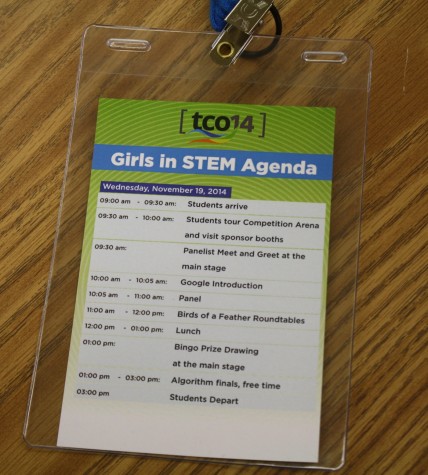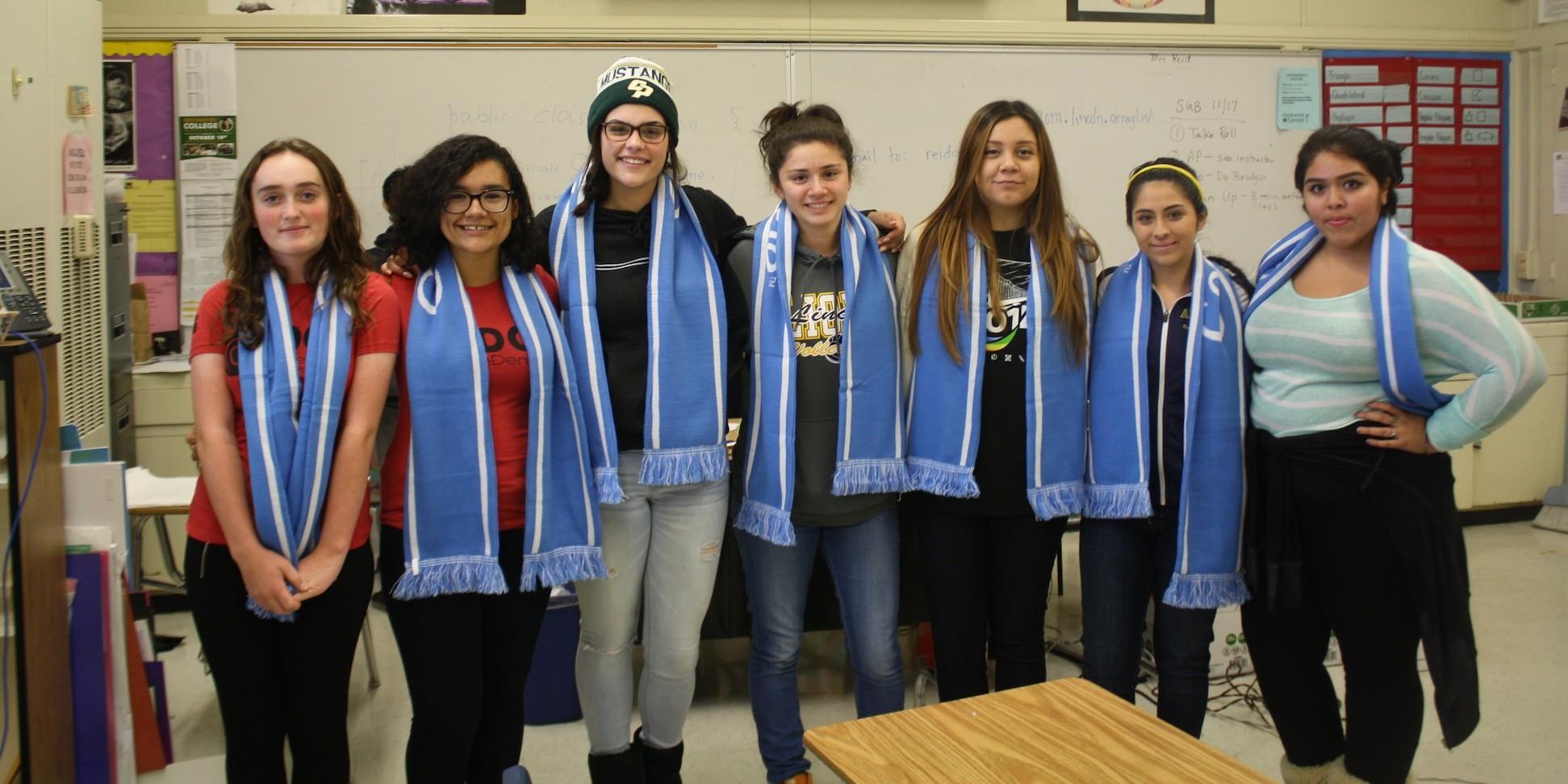Lincoln Girls Take on S.T.E.M.
November 24, 2014
Fifty lucky Lincoln students boarded a bus bound for TopCoder’s Girls In STEM event in San Francisco on Wednesday, Nov. 20. The field trip, led by Math teacher Mrs. Nancy Reid, received an impressive 68 sign-ups in all, but a contingent of only 50 girls could be accommodated.
The event, according to Mrs. Reid, was “specific; it was ‘Girls in STEM’, sponsored by Google because they’re trying to recruit more girls.” The acronym ‘S.T.E.M.’ stands for Science, Technology, Engineering, and Math.

This career-focused experience was especially intended to reach out to the female half of Lincoln’s student body (more accurately, 52 percent, in 2013-2014), and for a very good reason.
Reid said, “I know I wanted, I had men in my classes who wanted to join but they couldn’t. [Technology education] should be available for everybody. But girls don’t think technology is for girls. There’s that stereotype, so they’re trying to break that stereotype and say, ‘It’s okay to be a girl in technology.’ We’re trying to change that.”
Lion Tales interviewed several student participants about their experiences on the field trip and with S.T.E.M. education in general.
What was your favorite part of this ‘Girls in STEM’ event?
Jade Graves (9th grade): “I had two favorites. One of them was seeing the panel and actually getting to meet them. And watching all of the kinds of competitions going on. [The competitions] were coding, like the fastest time or something like that. It was interesting.”
Zoe Kanakis (12th grade): “I liked meeting the panel and getting to know their background. It was cool to see that you don’t have to know what you’re doing in order to get into the technology field. Like they didn’t start out being like, ‘oh, I want to go into computer science,’ from day one. They were like, ‘maybe I want to do this, maybe I want to do that.’ They fell into it.”
Jocelyn Rodriguez (11th grade): “Definitely when they got to talk to us. They talked about their careers.”
Mrs. Reid: “The favorite part was, I was very proud of our Lincoln girls. They represented our school very well. They asked very intelligent questions. We were 25% of the attendance. We had 50 girls out of the 200 high school girls there. We were the largest group. Most of the questions that were asked were from Lincoln girls. And at the very end, there was an activity, and if you participated in the activity– it was like a BINGO game but it was STEM– the girls had to go talk to professional engineers in tech and ask them certain questions. And if they completed that, then they could go into the drawing. So most of our girls won, because they participated. They were risk-takers. They were outgoing. And you can see that they shined. That was very rewarding to me that they asked intelligent questions and they were involved.”
Do you have any career goals in a S.T.E.M.-related field? If so, has attending events like this one, along with the encouragement from Lincoln, influenced the path you want to take for your future?
Jade Graves: “I want to, but it’s kind of early for me… I mean, I don’t know yet what I want to do, but that’s one of the choices I was planning on making. I haven’t decided yet.”
Jocelyn Rodriguez: “I think it was more about exploring stuff…Before I went to this, I actually had what I wanted to be. And like going, it just influenced me because basically now I want to go into that, but investigate more about it.”
Denise Gutierrez (12th grade): “I know I want to be an engineer, but I don’t know exactly what’s STEM. So the opportunity yesterday really showed me. Being an engineer scared me a bit because I know not many women are in it. So the fact that they opened up and they told us not to be afraid and to be an engineer, that motivated me more… I was thinking biomedical, but I did get really persuaded yesterday about the computer side.”
Mrs. Reid commented on the benefits a high school experience with ample opportunity to learn about S.T.E.M. can provide for Lincoln students. “It brought awareness to see what opportunities are available to our young students. I mean, some students don’t know what STEM is or what computing is, so this was an opportunity for them to learn what it’s about. And not only for our younger students, but our older– because we had some freshman to senior students.”
She continued, “We had a wide range of girls who were curious about it, wanted to learn more about it, or were like, ‘yeah! This is what I want to do.’ Or we had some, ‘I like this environment. I like the perks and the benefits a high-tech company provides for its employees. It just kind of gives them something to work towards, if they’re interested, or just to educate them about what is available for them so they can make the best decisions for their future.”
Currently, women make up only 18 percent of the technology workforce in America, while men are 82 percent. This “gender gap” is wide, but the younger generation is on its way to fix that. After all, there is by no means a requirement that a student has to be of a certain gender to select a college major in a S.T.E.M.-related area of study. Then once within the job market of progressive Silicon Valley, anyone with sufficient credentials should be considered equally desirable when he or she applies for a job.
The main problem, according to advocates for women entering into left-brain fields, is instilling that sense of confidence and motivation in younger girls in the first place. Programs such as ‘Girls in STEM’ empower girls to explore a career path that fits their interests, be it teaching, nursing, graphic design, accounting, or even (perhaps especially) engineering.
Reid added that science, engineering, computing, and high-tech companies are all on the brink of “trying to diversify. At the rate that colleges are producing computer scientists, they’re only producing like 30 to 40% of what is needed. We need 1.4 million people. We don’t have enough. We [Lincoln] can add more people to those programs.”
